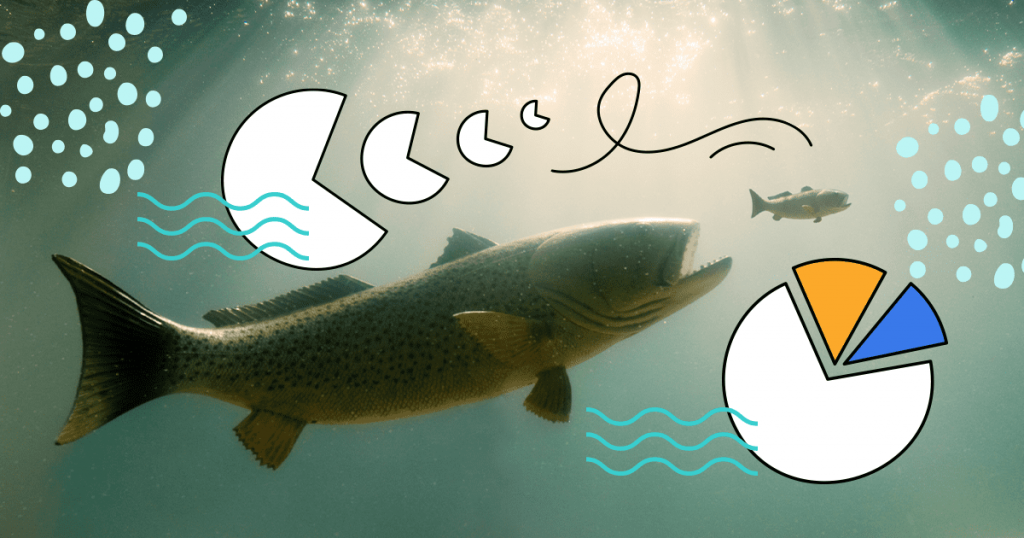Launching a brand new product is exhilarating for a business owner, and with good reason.
Usually, new products not only add up to happy customers but opportunities to attract new business and seriously fatten up your bottom line.
However, product cannibalization can mean you wind up stealing sales from yourself instead of wooing them away from your competition.
Making sure product cannibalization doesn’t unexpectedly eat into your existing sales is all about putting together a smart branding strategy right from the get-go.
Here’s a closer look at how you can better anticipate every possibility and keep your profit margins robust.
What is Product Cannibalization?
Imagine you run a successful company that specializes in top-tier cleaning solutions for household appliances.
You’re doing well. You have a solid clientele and plenty of repeat business.
Every last one of your customers swears by your products and spreads the word about them to others they know, bringing in even more business for you.
So you decide to further capitalize on that success by launching an incredible new cleaning solution, figuring it can only add to your profits, and you might even be right.
But if product cannibalization occurs, your existing customers will simply substitute the new product for one of the old ones they were already using instead of adding it to their routines.
In some instances (as with phasing out old products in favor of new ones or attempting to reach new demographics), product cannibalization may be part of the desired outcome for a specific product launch.
However, it’s usually an utterly accidental phenomenon that not only eats into profits but often overall sales volume, as well.
What are the Causes of Product Cannibalization?
When product cannibalization is accidental, it often stems from a lack of foresight about how consumers will receive a new product line.
Here are some common examples of what that might look like.
The new product is too similar to an older product
For a product to inspire existing customers to add it to their existing routine, it needs to bring something different to the table.
That difference can be as big as a new suite of features or as small as a limited edition aesthetic design. But without it, your customers will likely simply choose one of your products over the other.
You’ve failed to tap into a new customer base
Usually, the potential to tap into new demographics and reach new audiences is part of the desired outcome with a new product launch.
However, suppose you haven’t successfully done your research on your targets. In that case, you could wind up appealing to the same customer base you already have, leading to underwhelming sales growth and stagnating profits.
You’ve miscalculated your price points
If your newer product is significantly cheaper than one of your older products without also being quite different, you’ll likely see sales of comparable older products decline sharply.
Your customers will jump at the chance to save their hard-earned money, and your bottom line will show the damage.
What is the Impact of Product Cannibalization?
When product cannibalization arises unplanned and uncontrolled, it can add up to bad news for your company. The following are a couple of the consequences to be aware of.
It can oversaturate the market
When it comes to business and marketing, more isn’t always more.
When there’s no demand for more store locations or additions to an existing line, expansion can hurt more than it helps.
Starbucks is an excellent example of how this can look.
If you’ve ever thought it seemed like there was a Starbucks on every corner, know that it wasn’t your imagination. In 2014, the coffee giant opened close to a thousand new stores, including in areas with no demand for an additional location.
Unfortunately, the new stores ultimately hurt the profitability of the old ones, eventually leading to the closure of over 500 Starbucks shops.
It can damage your brand
Launching new products without fully understanding how they might impact your existing brand image can easily backfire.
For instance, let’s say a luxury department store with a reputation for quality and high standards decides to tap into a new market by adding a few discount product lines to their catalog.
Although that store might attract new business and appeal to new demographics, they also risk diluting their existing brand reputation.
Current customers may begin to expect luxury quality at bargain prices and or no longer feel like the store is in line with their shopping philosophy.
Of course, there is also deliberate product cannibalization to consider.
A company might choose this route as a fresh way to stay competitive, expand their market share, or better meet their target audience’s needs.
Proactive, deliberate product cannibalization can also be a great way to prevent the same thing from happening at the hands of other companies.
Coca-Cola’s launch of its popular Coke Zero product is an excellent example of how this works.
When Coke Zero first hit the market in 2006, the end goal was to appeal to younger males looking to cut back on sugar, and it was a massive success in that regard.
And yes, Coke Zero did wind up taking customers away from its own more “female-oriented” Diet Coke product. However, it also attracted enough new members of the target demographic to cause an overall increase in sales.
What are the Best Ways to Avoid Product Cannibalization?
When properly introduced, new products can help encourage consumers to buy from you instead of your competition. They can also facilitate growth, innovation, and a healthy increase in sales.
Here’s how to keep product cannibalization from taking an unexpected bite out of your profits.
1. Do comprehensive market research
Before you launch a new product, it’s crucial that you first ensure there’s a genuine demand for it.
Start by conducting thorough research into the current market. What consumer needs are currently going unmet? How have competitors already tried (but failed) to meet those needs?
Next, crunch the numbers and review who’s currently buying your products.
Do the same with any untapped demographics you hope to reach with your pending product launch.
Now compare the two. If there’s too much overlap, product cannibalization could be a concern.
2. Go the extra mile to make your products distinct
If your customers can’t tell the difference between your new product and one or more of your old ones, they’re not going to see the value in buying both.
That’s why it’s so important to make sure each new product you add to your catalog truly brings something new and different to the table without also jeopardizing your profits.
- Upgrade an existing product with new features that appeal to a specific demographic or target group.
- Introduce a premium option to better appeal to customers who are willing to pay a little more for a better product.
- Come up with a product designed to complement another product you already sell, helping your customers extract even more value and enjoyment from it.
- Brainstorm something genuinely new and unique that successfully meets an unmet market need — a truly indispensable product your customers won’t be able to live without.
3. Set your product up for success with intelligent marketing
Coming up with a fantastic new product that’s innovative in all the right ways isn’t enough by itself to ensure a successful launch.
Contrary to popular belief, there’s really no such thing as a product so good it sells itself. That’s what smart, on-brand marketing is all about.
Position your new product for success with excellent marketing material that directly addresses the pain points the product was designed to solve.
Inform, educate, inspire, and motivate with interactive content your audience will love.
If you’re partnering with other retailers to distribute your product, work closely with them to ensure it’s handled properly.
4. Test the waters in preparation for your launch
Even when you’ve done all your prep work and research correctly, you still can’t predict how your audience will receive your product down to the last detail.
However, implementing a testing period before your launch can help you better predict what you can expect.
Use surveys and consumer interviews to collect feedback on your initial product idea, as well as details like the packaging and associated marketing messages.
Then test your products via focus groups to learn even more. If your product isn’t appealing to the right people in the right ways, you can make adjustments prior to launch.
5. Collect data and keep detailed records
The work of making sure your product launch is successful doesn’t stop after the launch itself is over.
Closely monitor the sales of both your new product and your existing catalog to detect any possible signs of product cannibalization.
This way, you stand an excellent chance of spotting any problems early enough to take action.
You’ll also want to collect plenty of data to refer back to the next time you plan a product launch. A well-planned product development strategy always stands a much better chance of meeting or exceeding expectations.
Wrap Up: Innovative Content Production Leads to Successful Product Launches
As you can see, coming up with a terrific product with a high potential for success is only part of what it takes to orchestrate a successful launch.
The rest is all about savvy product marketing that genuinely sells people on the product’s benefits and stirs interest in the brand behind that product.
Interactive content that gets your customer’s attention and keeps them engaged is an integral part of any modern marketing and brand-building campaign.
To learn more, check out this piece on how one company leveraged the power of interactive content to sell out one of its innovative products.
With a little careful planning and innovation, you can do the same!










